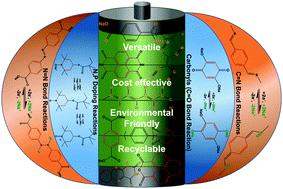当前位置:
X-MOL 学术
›
Energy Environ. Sci.
›
论文详情
Our official English website, www.x-mol.net, welcomes your
feedback! (Note: you will need to create a separate account there.)
Understanding the sodium storage mechanisms of organic electrodes in sodium ion batteries: issues and solutions
Energy & Environmental Science ( IF 32.4 ) Pub Date : 2020-01-31 , DOI: 10.1039/c9ee03637g Ranjusha Rajagopalan 1, 2, 3, 4, 5 , Yougen Tang 1, 2, 3, 4, 5 , Chuankun Jia 5, 6, 7, 8 , Xiaobo Ji 1, 2, 3, 4, 5 , Haiyan Wang 1, 2, 3, 4, 5
Energy & Environmental Science ( IF 32.4 ) Pub Date : 2020-01-31 , DOI: 10.1039/c9ee03637g Ranjusha Rajagopalan 1, 2, 3, 4, 5 , Yougen Tang 1, 2, 3, 4, 5 , Chuankun Jia 5, 6, 7, 8 , Xiaobo Ji 1, 2, 3, 4, 5 , Haiyan Wang 1, 2, 3, 4, 5
Affiliation

|
Organic electrode materials offer a new opportunity to develop high energy/power density, low-cost, environmentally benign sodium ion batteries (SIBs). For many years this category of materials has not been considered as a potential electrode candidate for SIBs mainly because excessive research focused on inorganic materials due to their successful commercialization in the proven lithium ion battery (LIB) technologies. However, recently, many promising advancements have been made in the field of organic cathode and anode materials for SIB applications. This review for the first time consolidates and provides insights into the different sodium storage mechanisms observed in various categories of organic electrode materials. We believe that the fundamental understanding of the redox mechanisms that govern the electrochemical performances of SIBs is necessary to design new materials/electrodes and is beneficial for enhancing the existing properties of investigated compounds.
中文翻译:

了解钠离子电池中有机电极的钠存储机制:问题和解决方案
有机电极材料为开发高能量/功率密度,低成本,环境友好的钠离子电池(SIB)提供了新的机会。多年来,这类材料一直未被认为是SIBs的潜在电极候选材料,这主要是因为由于无机材料在成熟的锂离子电池(LIB)技术中的成功商业化,使得对无机材料的研究过多。然而,近来,在用于SIB应用的有机阴极和阳极材料领域中已经取得了许多有希望的进展。该综述首次巩固并提供了对各种有机电极材料类别中观察到的不同钠存储机制的见解。
更新日期:2020-01-31
中文翻译:

了解钠离子电池中有机电极的钠存储机制:问题和解决方案
有机电极材料为开发高能量/功率密度,低成本,环境友好的钠离子电池(SIB)提供了新的机会。多年来,这类材料一直未被认为是SIBs的潜在电极候选材料,这主要是因为由于无机材料在成熟的锂离子电池(LIB)技术中的成功商业化,使得对无机材料的研究过多。然而,近来,在用于SIB应用的有机阴极和阳极材料领域中已经取得了许多有希望的进展。该综述首次巩固并提供了对各种有机电极材料类别中观察到的不同钠存储机制的见解。











































 京公网安备 11010802027423号
京公网安备 11010802027423号